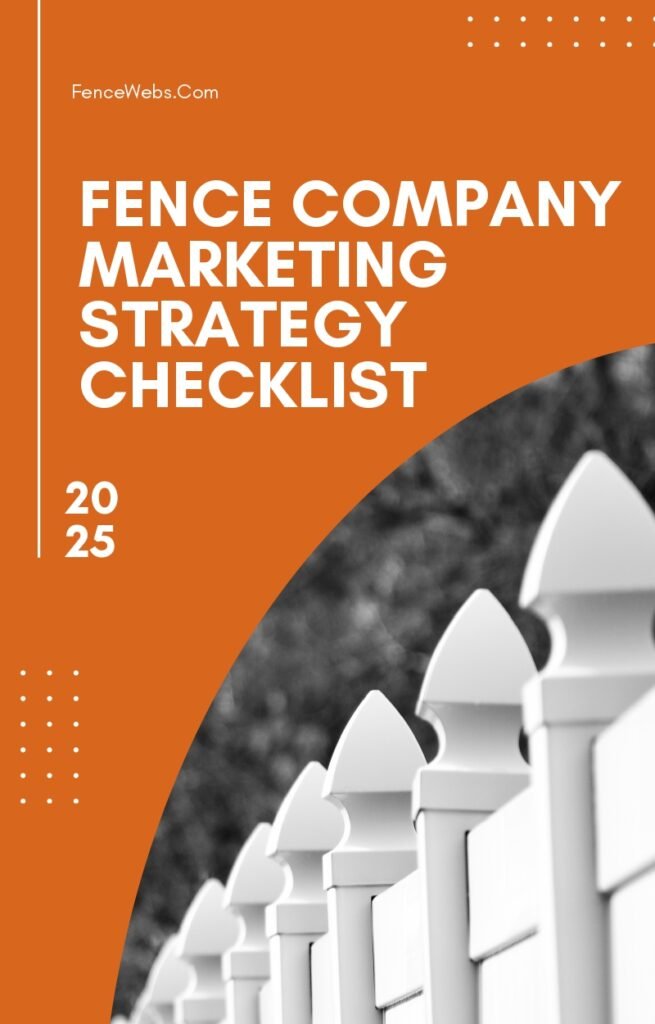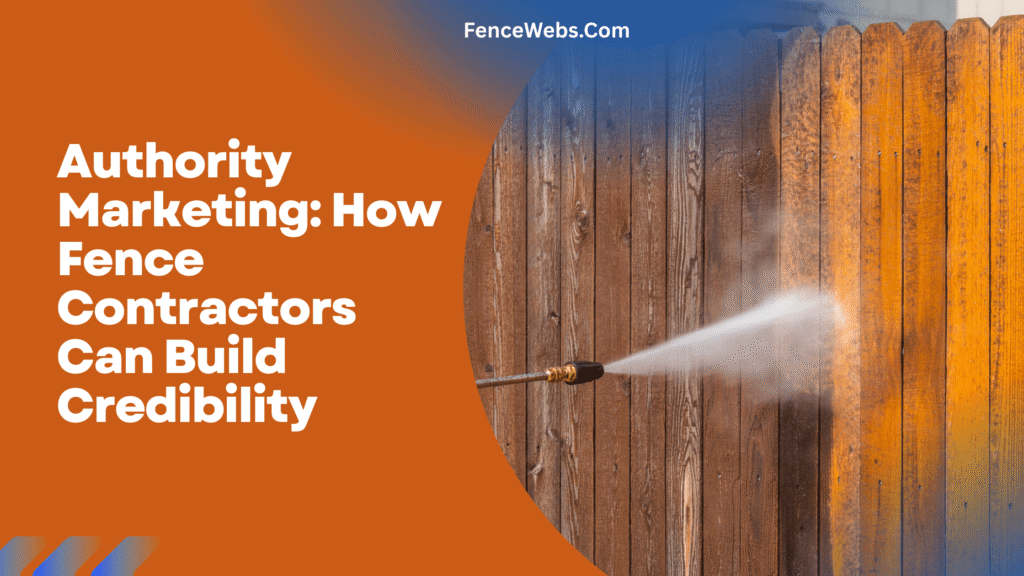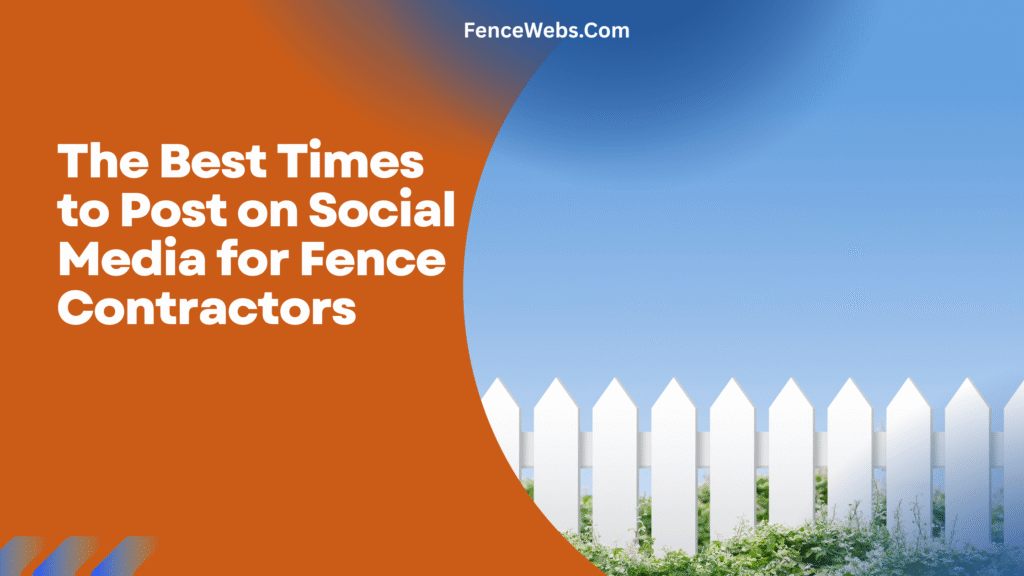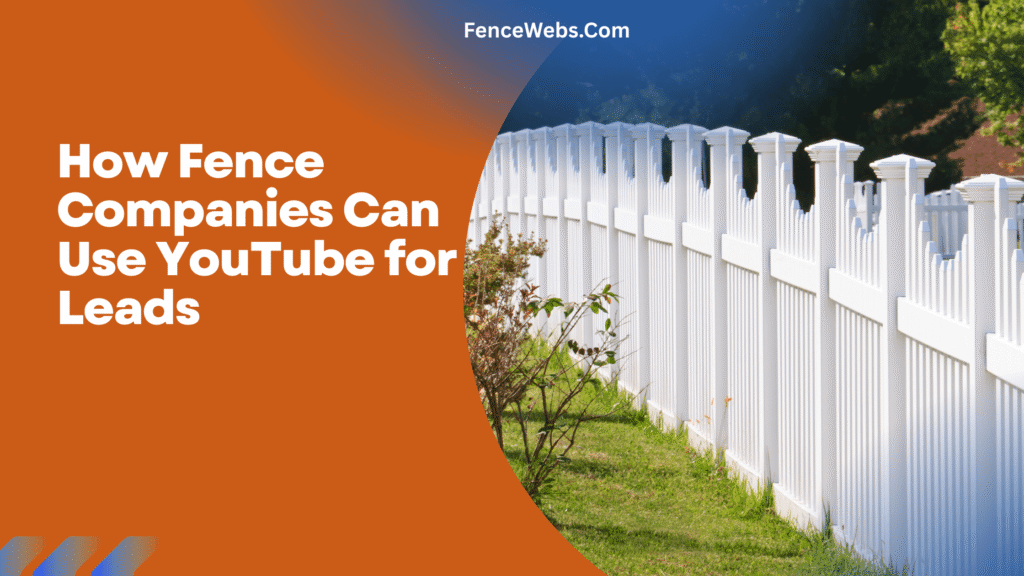Running a fence company is tough. You’re busy installing fences, managing crews, and dealing with customers. But if you want more local customers to find you online, blogging can be a game-changer.
Blogging isn’t just writing for fun. It’s a smart way to improve your website’s ranking on Google, attract local clients, and show you’re the expert in fencing. Let’s break down how blogging can help your fence company shine in local searches.
Why Local Rankings Matter for Fence Companies

Local rankings determine who shows up when someone searches “fence company near me.” Most customers choose businesses on the first page of Google. If your website isn’t there, you’re missing out.
Blogging helps you rank higher by giving Google fresh content to index. It also shows customers you know your stuff, building trust. For fence companies, local rankings mean more calls and more jobs.
What Is Blogging, and Why Should You Care?
Blogging is creating articles or posts on your website about topics your customers care about. Think “Top 5 Fence Styles for Privacy” or “How to Maintain Your Wooden Fence.” These posts educate and attract people searching for answers.
For fence companies, blogging is a way to connect with local homeowners and businesses. It shows you’re active, knowledgeable, and ready to help. Plus, it boosts your SEO (search engine optimization), which helps you rank higher.
Blogging Builds Trust
Customers want to hire someone they trust. A blog shows you’re an expert in fencing. Writing about common fence problems or new materials makes you look reliable.
When people read your blog, they see you as more than just a contractor. You become their go-to source for fencing advice.
Blogging Drives Traffic
Every blog post is a new page on your website. More pages mean more chances for Google to show your site in searches. If someone searches “best fence for dogs in [your city],” a blog post on that topic could bring them to you.
More traffic means more potential customers. And when those visitors are local, they’re more likely to call you for a quote.
How Blogging Improves Local SEO
Local SEO is all about getting found by people in your area. Blogging helps in several ways. Let’s look at the key benefits.
1. Targets Local Keywords
Keywords are the words people type into Google. For fence companies, local keywords like “fence installation [your city]” are gold. Blogging lets you use these keywords naturally in your content.
For example, a post titled “Why Vinyl Fences Are Perfect for [Your City] Homes” can rank for local searches. The more local keywords you use, the better Google understands where you operate.
2. Keeps Your Website Fresh
Google loves fresh content. A website that hasn’t been updated in years looks stale. Regular blog posts show Google your site is active, which can improve your rankings.
Even one post a month can make a difference. It tells search engines your business is alive and relevant.
3. Boosts Your Google Business Profile
Your Google Business Profile (GBP) is your free listing on Google Maps. Blogging can support it by driving traffic to your website. When people engage with your site, Google sees it as a sign of authority.
You can also link blog posts to your GBP updates. This keeps your profile active and helps local customers find you.
4. Earns Backlinks
Backlinks are when other websites link to yours. They’re like votes of confidence for Google. A great blog post about “How to Choose a Fence for Windy Areas” might get linked by a local homeowner’s association or a gardening blog.
These backlinks tell Google your site is trustworthy, boosting your local rankings.
Types of Blog Posts for Fence Companies

Not sure what to write about? Here are some ideas that work for fence contractors. These topics are simple, engaging, and SEO-friendly.
Educational Posts
Teach your audience something useful. Examples include:
-
How to Clean and Maintain a Wooden Fence
-
Vinyl vs. Wood: Which Fence Is Best for Your Home?
-
5 Signs Your Fence Needs Repairs
These posts show your expertise and answer common customer questions.
Local-Focused Posts
Tie your content to your service area. Ideas include:
-
Best Fences for [Your City]’s Weather
-
Why [Your City] Homeowners Love Privacy Fences
-
Local Fence Regulations in [Your County]
These posts target local keywords and attract nearby customers.
Project Showcases
Show off your work. Write about:
-
A Recent Fence Installation in [Your City]
-
Before and After: Transforming a Backyard with a New Fence
-
How We Built a Custom Gate for a Local Business
Add photos (if possible) to make these posts engaging.
Seasonal Topics
Write about timely topics, like:
-
Preparing Your Fence for Winter in [Your City]
-
Spring Fence Maintenance Tips
-
Summer Fence Ideas for Outdoor Living
These keep your content relevant year-round.
How to Write Blog Posts That Rank
Writing a blog that boosts your rankings isn’t hard. Follow these simple tips to make your posts effective.
Use Simple Language
Fence customers aren’t looking for fancy words. Write like you’re talking to a friend. Short sentences and clear ideas work best.
For example, instead of “optimal fence durability,” say “fences that last longer.” Keep it relatable.
Include Local Keywords
Mention your city or area in the title, headings, and text. For example, “Fence Repair Tips for [Your City] Homeowners” is better than “Fence Repair Tips.” This helps Google connect your post to local searches.
Add a Call to Action
End every post with a clear next step. Ask readers to call for a quote, visit your website, or check out your portfolio. Make it easy for them to contact you.
Keep Posts Short and Scannable
Busy homeowners don’t read long paragraphs. Use short sentences and paragraphs (like this blog). Add headings, bullet points, and lists to make it easy to skim.
Optimize for SEO
Here’s a quick checklist for SEO-friendly blog posts:
-
Title: Include a local keyword and keep it under 60 characters.
-
Meta Description: Write a 160-character summary of the post.
-
Headings: Use H2 and H3 tags (like in this blog).
-
Images: Add alt text with keywords (e.g., “vinyl fence [your city]”).
-
Links: Link to other pages on your site, like your services or contact page.
How Often Should You Blog?
You don’t need to blog every day. Even one post a month can help. Consistency matters more than quantity.
Here’s a simple blogging schedule for fence companies:
|
Frequency |
Benefit |
|---|---|
|
1 post/month |
Keeps your site fresh for Google |
|
2 posts/month |
Targets more keywords |
|
4 posts/month |
Builds authority faster |
Start with one post a month. As you get comfortable, aim for two.
Common Blogging Mistakes to Avoid
Blogging is simple, but there are pitfalls. Here’s what to watch out for.
Writing for Robots, Not People
Don’t stuff your post with keywords. It makes your content hard to read. Write for your customers first, then tweak for SEO.
Ignoring Local Focus
General topics like “Fence Maintenance Tips” are okay but less effective. Always tie your posts to your service area for better local rankings.
Not Promoting Your Blog
A blog post won’t help if no one sees it. Share your posts on your Google Business Profile, Facebook, or email newsletters. This drives traffic and signals to Google that your content is valuable.
Forgetting to Update Old Posts
Old blog posts can still rank well if updated. Add new info or refresh the keywords every year. It’s like giving your website a tune-up.
How FenceWebs Can Help
At FenceWebs, we’ve helped fence companies like yours for over five years. We know blogging can feel overwhelming. That’s why we offer services to make it easy.
Our team can:
-
Write SEO-optimized blog posts for your website.
-
Target local keywords to boost your rankings.
-
Share your posts on social media and Google Business Profile.
-
Track your rankings to ensure your blog is working.
You focus on building fences. We’ll handle the blogging.
Real Results from Blogging
Let’s look at an example. A fence company in [Your City] started blogging with us. They posted one local-focused blog a month, like “Best Fences for [Your City]’s Coastal Weather.”
After six months, their website traffic doubled. They ranked on page one for “fence contractor [Your City].” More importantly, they got 20% more calls from local customers.
Blogging works. It’s a small investment for big results.
Getting Started with Blogging
Ready to start? Here’s a simple plan:
-
Pick a Topic: Choose something your customers care about, like fence maintenance or local regulations.
-
Write a Post: Keep it 500-800 words, use local keywords, and add a call to action.
-
Post It: Publish on your website and share on social media.
-
Track Results: Use Google Analytics to see how many people visit your blog.
If this feels like too much, FenceWebs can help. We’ll create a blogging plan tailored to your fence company.
Final Thoughts
Blogging is a powerful tool for fence companies. It boosts your local rankings, attracts customers, and builds trust. With just a few posts a month, you can outshine competitors and grow your business.
Don’t let blogging intimidate you. Start small, stay consistent, and watch your website climb the ranks. If you need help, FenceWebs is here to make it happen.
Ready to get more local customers? Contact FenceWebs today for a free consultation. Let’s build your online presence as strong as your fences.








